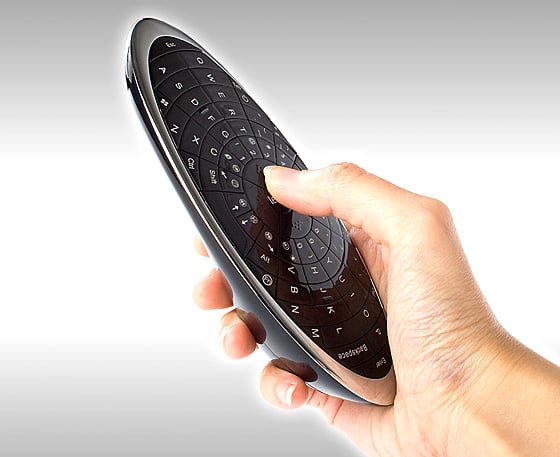Principal’s Map For Parent Involvement
by Chris Wejr, connectedprincipals.com
August 28th 2011 
Parent involvement and engagement are areas in which I have been trying to grow as an educator. Through families at my school as well as online, our school has begun to try to be more inviting and to actually listen to the voice of our families. This post was originally posted on The Wejr Board Blog as a guest post by Sheila Steward (@sheilaspeaking). Sheila is one of my mentors on the topic of parent and family engagement in school.
Sheila’s perspectives and advice regarding parent involvement come from a variety of roles and experience in education and working with parents. She is involved in local and provincial parent networks in Ontario, and she supports newcomer families with English language learning. In the past 8 years, she has worked collaboratively with a number of principals and administrators to support parent involvement initiatives, consultations, and activities. She recently presented to principal candidates on school councils and parent involvement.
A Principal’s Map for Parent Involvement* by Sheila Stewart
I think being a principal is an amazing and key role to have in education. I also recognize the work load of principals—from managing the physical space of the school to the responsibilities they have to the school community—staff, students, and families. The responsibility of establishing parent involvement, outreach and communication strategies at the school will rest a large part on the principal as well.
Parent involvement has become a frequent topic of conversation in education lately with the many ways that it is analyzed, interpreted, and deliberated upon. The visions for and expectations of parents in both their involvement in their own child’s education and in the broader context of school and community may also vary from district to district, and from stakeholder group to stakeholder group—each may want something different in what it looks like and in its outcomes.
So…where to start as new to the principal role, or new to a school?
From the system level (Ministry/Depart. of Ed./District/School Boards) the message may be that the kind of parent involvement to foster and focus on is that which increases student learning and/or specific “achievement” outcomes. I am not sure there is a set of clear and certain strategies that can be used and measured, but not all should be at loss because of this and nor should parent involvement be dismissed. I believe that the links with parents and families remain essential to supporting students.
The culture and climate of the school will become apparent quite quickly to a new administrator. This is the context where a principal will need to navigate various avenues that are suitable to the parents and families of the school’s students. It is important for principals to find a style that is appropriate to his or her school community, whether the school is large or small, urban or rural, elementary or secondary. A principal who develops strong relationships with parents and parent groups, will have parents who are more likely to become involved in the school community, and this in turn will have a strong impact on the overall effectiveness and inclusiveness of the school. The principal will be key in modelling and setting the appropriate positive tone and connections with parents.
As long as principals are familiar with their local policies and mandates regarding parent involvement and parent advisory groups, they should be able to create a suitable and flexible plan for the school community. Parents will be diverse in the ways they want to be involved, and the best plan for parent involvement should honour this. Policies and guidelines can be helpful, but there will always be realities to consider.
Before establishing a plan, a principal might want to consider the following:
- Get to know the ways parents connect to the school currently (e.g. face to face, formal/informal, electronically, social media).
- Take some time before moving forward with new plans—extra time may be needed to build relationships and trust to support changes you may want to make ahead.
- Build on what is working well—lead through listening.
- Help all stakeholders connect to the broader picture of education, while still maintaining that each student matters and has unique needs.
- Create opportunities and spaces to understand and gain clarity about what parents need, what the comfort zones of involvement are currently, and what barriers exist.
A principal might also want to determine the following:
- Are parents involved in authentic, engaging ways, or are they receiving mixed messages about the nature or pathway of their involvement?
- Have parents been receiving information about the positive things and extra efforts that teachers/staff have been doing to support students and the school? (creates confidence and can inspire further support from parents)
- Has the school demonstrated a welcoming approach and honoured the roles and expertise of parents in their child’s life and in the community?
Communication Comes First!
Regardless of the approach or plan, it will be important to establish clear communication plans and strategies—who, when, how, how often, what—between the school/principal and parents/community, between teachers and parents, and also the parent group with each other and the school’s parents. Principals are ultimately responsible for school communications, so they need to be clear and strategic in all the various protocols that may be preferred by both teachers and parents. Steve Reifman also has a great list of suggestions on his blog, “9 reasons to communicate frequently with parents”.
It is also important that the school community is aware of how 2-way communications can occur. This may involve a number of different ways, including electronic communication and/or social media. Opportunity for 2-way communication often IS the parent engagement. All else can flow from there, in a much more proactive and realistic way which may also reduce the need for conflict resolution. On-going input and feedback from parents will also help inform a principal’s decision-making at the school.
Here is what it might look like as you proceed into the school year:
- Parents who want to support from home will know that it is valued and will still have access to support and 2-way communication channels.
- Parents who wish to help in the classroom and/or communicate with their child’s teacher will know when and how to do that.
- Parents who are committed to and interested in the more structured and organized meetings and activities at the school will be valuable and vital for further connections and partnerships with families through shared leadership and outreach.
- Parents who attend special events, read the school news and blogs will feel connected and will share the good news with others in the community.
- Parents who cannot attend the school as often will know how to communicate with the school or teacher or parent group.
What is it all for?
Clear and understood channels for communication and an inclusive vision of the different way that parents will support kids should enhance the principal’s ability to facilitate partnerships and positive relationships within the school community that will ultimately support student experiences at the school. Through various communication and involvement pathways, all parent participation can be valued. As valued and trusted participants in education, it is more likely that parent involvement will benefit principal leadership, teacher support, and student learning, as well as contribute to an inclusive, vibrant school community.
I hope this framework of ideas is useful and leads to discovering more effective and practical strategies that can be shared further.
*Note: at Kent School, we have a goal of “Family Engagement” (for insight on involvement vs engagement see Larry Ferlazzo’s post here) as we realize that the support systems of many of our students extend beyond the parents. The ideas from Sheila will be applied to our goal.
Thank you to Sheila Stewart for her efforts and thoughts with this post. As always, comments and questions for Sheila and others are appreciated and encouraged. Please see the original post for more comments.
Original Page: http://www.connectedprincipals.com/archives/4398
Shared from Read It Later
 Like skiers and snowboarders sharing the same powder, I envision some kind of uneasy truce between those using their DSLRs for still photography, and those using them for videography. I have no basis for the dirty looks and stink eye I imagine them giving each other, but it still warms my heart to see a company like Polaroid trying to bring those two sides together.
Like skiers and snowboarders sharing the same powder, I envision some kind of uneasy truce between those using their DSLRs for still photography, and those using them for videography. I have no basis for the dirty looks and stink eye I imagine them giving each other, but it still warms my heart to see a company like Polaroid trying to bring those two sides together.














































